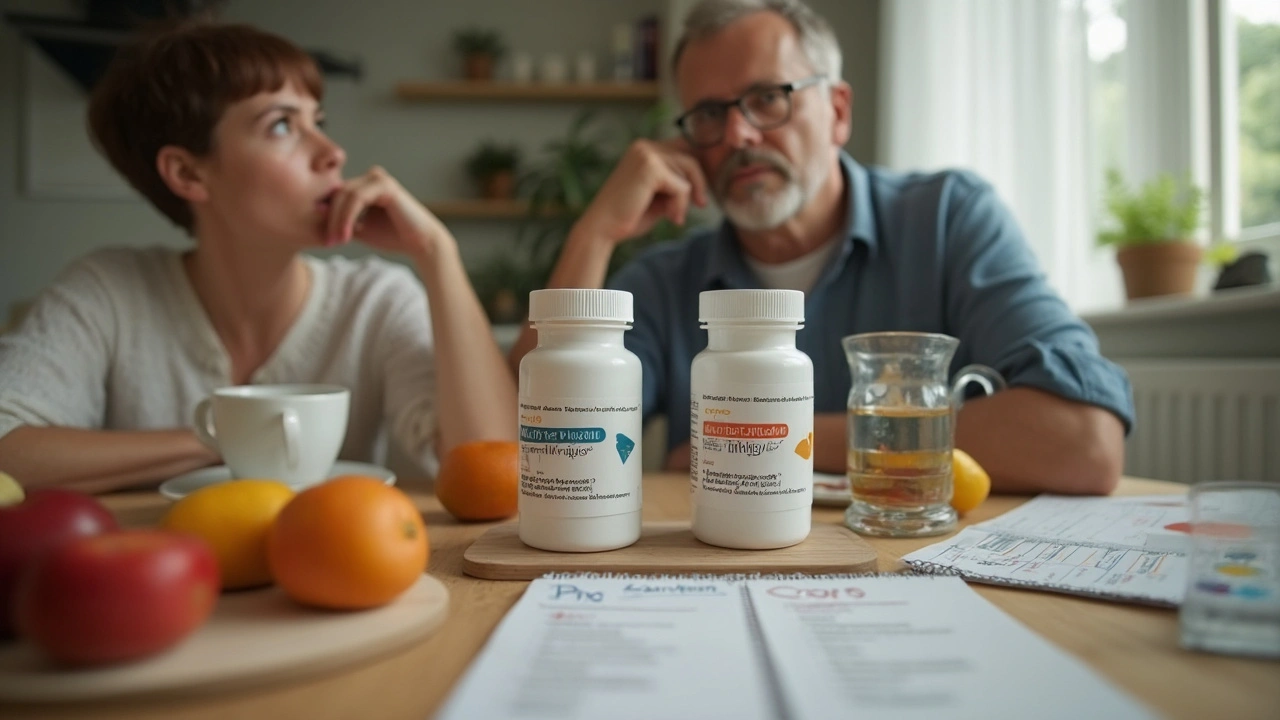Alpha-Glucosidase Inhibitors — a simple way to blunt meal spikes
Want to reduce blood sugar spikes after meals? Alpha‑glucosidase inhibitors (AGIs) are a class of diabetes drugs that slow the breakdown of carbs in your gut so glucose enters the bloodstream more slowly. They don’t usually cause major weight change and can be a good add-on when post-meal readings are the main problem.
How they work & common drugs
AGIs block enzymes (alpha‑glucosidases) in the small intestine that break complex carbs into glucose. That means bread, rice, and starchy foods raise blood sugar more slowly after you eat. The most common drugs are acarbose and miglitol; voglibose is used in some countries. Expect modest A1c drops—usually in the 0.5% range—because these drugs target postprandial glucose, not fasting levels.
Practical tips & safety
Take AGIs with the first bite of each meal. Timing matters: if you miss that window, the drug won’t help that meal’s spike. Start at a low dose and increase every few weeks to reduce gas and bloating—those are the most common side effects because undigested carbs ferment in the colon.
If you combine an AGI with insulin or a sulfonylurea, watch for low blood sugar. Important safety tip: treat hypoglycemia with pure glucose (glucose tablets or gel). Sucrose (table sugar) may not work fast because AGIs block its breakdown into glucose.
Some people shouldn’t take AGIs: avoid them with inflammatory bowel disease, intestinal obstruction, chronic malabsorption, or cirrhosis. Acarbose has been linked to rare liver enzyme rises, so clinicians often check liver tests at baseline and during treatment. Always tell your provider about all meds and existing gut problems before starting.
Drug interactions are limited, but adding AGIs to drugs that lower blood sugar raises hypoglycemia risk. AGIs don’t interact much with most blood pressure or cholesterol meds, but any change should be discussed with your prescriber.
Who tends to benefit? People with type 2 diabetes whose biggest problem is high post-meal glucose, or those who prefer an oral option that doesn’t promote weight gain. They’re less helpful if fasting glucose is the main issue or if you have frequent digestive problems.
What about everyday life? Expect some gas and looser stools at first—eat smaller, balanced meals and increase dose slowly. Keep glucose tablets handy if you use other blood‑sugar‑lowering drugs. Monitor post-meal fingerstick readings to see if the drug is working: compare 1–2 hour post-meal numbers before and after starting therapy.
Any medication change should be a shared decision. Talk with your doctor about goals, side effects, and monitoring. If AGIs fit your pattern of high post-meal readings, they can be a useful, focused tool to smooth out those spikes.

